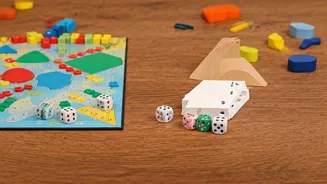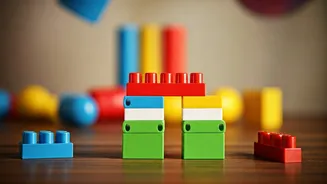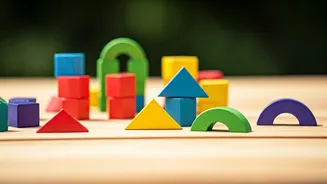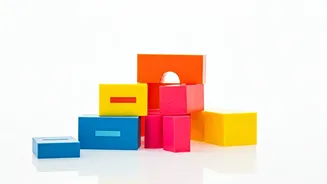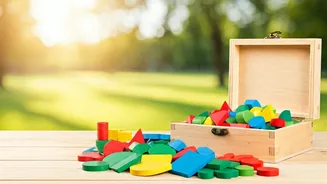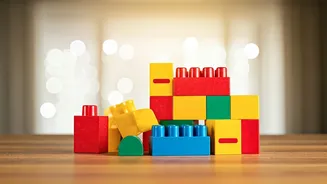Hands-On Exploration
One of the most effective methods to captivate children's interest in mathematics is to provide opportunities for hands-on, visual, and multi-sensory learning
experiences. Rather than relying solely on abstract concepts, incorporating physical objects and activities can significantly enhance comprehension and retention. This can involve using tangible items like building blocks, counters, or even food to represent mathematical ideas. By allowing children to manipulate and interact with these materials, they can develop a more concrete understanding of concepts such as addition, subtraction, and measurement. Furthermore, incorporating visual aids such as charts, diagrams, and illustrations can make the learning process more engaging and accessible. Multi-sensory activities, such as incorporating music or movement, can further stimulate learning. For example, creating a math-themed song or incorporating physical activities that involve counting or measuring can make the subject more enjoyable and memorable, ensuring that children grasp the essence of each concept.
Make Math Playful
Transforming math into a fun and engaging activity is another crucial aspect of sparking children's interest. Utilizing games, puzzles, and other playful activities can significantly alter their perception of the subject. Board games that involve counting, strategic thinking, or problem-solving can be a fun way to reinforce mathematical skills. Puzzles and brain teasers challenge children to think critically and apply their knowledge in a stimulating manner. Incorporating math-related apps and online games can also make learning more interactive and enjoyable, while also providing instant feedback and opportunities for practice. The key is to create an environment where learning feels more like play than work. This approach not only makes math more appealing but also helps children develop a positive attitude towards the subject, making them more likely to embrace challenges and persevere through difficulties. Integrating these elements helps in creating a conducive learning environment that keeps kids excited about math.
Relate Math to Life
Connecting mathematical concepts to real-life situations is essential for making the subject relevant and meaningful to children. Encourage them to apply math in their everyday activities to see its practicality and relevance. This can involve tasks such as calculating the cost of groceries during a shopping trip, measuring ingredients while cooking, or figuring out the distance traveled on a family road trip. Encourage them to see math not just as an abstract subject, but a tool for understanding and navigating the world around them. Creating such instances, where they can apply what they learn in the classroom to their daily lives enhances their interest and makes them realize the purpose of learning math. This connection fosters a deeper understanding of mathematical concepts and increases their motivation to learn, making math more enjoyable and valuable.
Create Supportive Zone
Creating a positive and supportive environment is crucial for fostering children's interest in math. Praise their efforts and focus on their progress rather than solely on their achievements. Encourage them to embrace mistakes as learning opportunities and to view challenges as chances for growth. Celebrate their successes and provide constructive feedback to help them improve. Foster a growth mindset, where children believe that their abilities can be developed through dedication and hard work. This can be achieved by praising the effort and strategies used rather than just the outcome. This approach not only boosts their confidence but also reduces the fear of failure, encouraging them to take risks and explore new ideas. Ensure that the child’s learning environment is such that it fosters their interest in the subject.
Keep Routine Consistent
Establishing a consistent routine for math practice can greatly benefit children's learning and interest in the subject. Regular practice helps reinforce concepts and build a strong foundation, while also making math a natural part of their daily lives. Allocate specific times for math activities, whether it's during homework time or a dedicated period for fun math games. Keeping the schedule regular helps children to mentally prepare themselves for the sessions and gives them more time to absorb the concepts in depth. Even short, consistent practice sessions can be more effective than sporadic, long sessions. This consistency can foster a sense of discipline and responsibility, teaching children the importance of perseverance and dedication. By establishing a routine, parents and educators can make math a manageable and enjoyable part of a child's learning journey, nurturing a love for the subject.
Monitor Progress Regularly
Regularly monitoring children's progress in math is essential to identify their strengths and weaknesses. Use various methods to assess their understanding and provide targeted support. This can involve quizzes, tests, and homework assignments, as well as informal observations during math activities. Analyze their work to identify areas where they excel and areas where they might struggle. Use this information to tailor your approach and provide additional support. Offer extra practice, explanations, or different ways of approaching problems. By tracking progress, you can ensure that children are keeping pace with their learning and feel supported. This also provides an opportunity to celebrate achievements and encourage them to continue learning. By keeping track of the areas they struggle in, you can provide better insights, and support, and enhance their interest and enthusiasm for mathematics.
Use Technology Wisely
In today's digital age, incorporating technology, apps, and digital tools can be a valuable approach to make math more engaging and interactive. There are numerous educational apps, websites, and software programs designed to help children learn math concepts in a fun and accessible way. These tools often offer interactive games, simulations, and exercises that can enhance understanding and retention. However, it's crucial to use technology wisely. Ensure that the apps and programs are age-appropriate, aligned with educational goals, and used in moderation. Supervise their usage to prevent distractions and ensure they are focused on the learning tasks. Technology can also be used to supplement traditional learning methods, providing additional practice, personalized feedback, and opportunities for exploration. When used strategically, technology can be a powerful tool for sparking children's interest in math.





